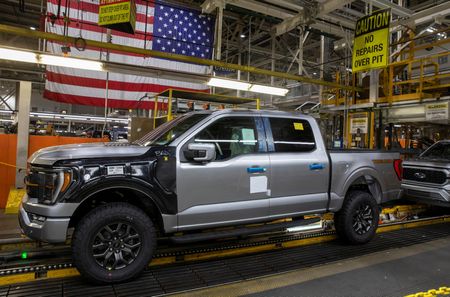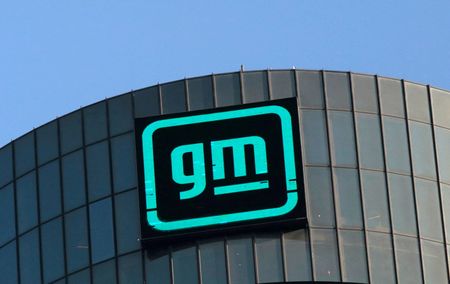DETROIT (Reuters) – General Motors Co and Ford Motor Co are expected to report strong profits for 2022 next week, powered by premium-priced pickup trucks and sports utility vehicles (SUVs).
Now, the Detroit rivals must convince investors that last year’s profit formula can keep working when costs for EV batteries are rising, high interest rates are cutting consumer purchasing power, and Tesla Inc is slashing prices.
Already there are signs the Detroit automakers are scaling back spending to offset competitive and economic pressure. GM has shelved for now plans to build a fourth EV battery plant in North America.
Ford is in talks with German unions to cut thousands of jobs in its European operations and possibly sell a German vehicle assembly plant. In October, it stopped funding autonomous vehicle affiliate Argo AI.
GM and Ford both rely on sales of pickup trucks and SUVs in the United States for the bulk of their global profits. This year, both automakers plan to ramp up sales of much less profitable electric vehicles in North America and other markets.
The risk to the Detroit automakers’ profitability would be a challenge in the best of times. But now, GM and Ford must factor in forecasts for a slowdown, or even a recession, in the U.S. economy.
EV battery raw material costs are rising, but U.S. EV market leader Tesla is cutting prices on its best-selling Model 3 and Model Y vehicles by as much as 20%.
The Model Y SUV competes with Ford’s Mustang Mach-E, GM’s Cadillac Lyriq EV, and with combustion SUVs the Detroit automakers sell.
Morgan Stanley estimated increased prices added an average of $3 billion a year to Ford’s pre-tax bottom line and was the equivalent of more than 200% of the improvement in the company’s pre-tax profits for 2022.
GM, the No. 1 U.S. automaker by sales in 2022, said higher prices added $2.1 billion to pre-tax profits in the third quarter compared to the same quarter in 2021 – equivalent to nearly half of pre-tax profits for the period overall.
The company has told investors it will spend $35 billion on electric and automated vehicles between 2020 and 2025. Ford has put its planned EV investments at $50 billion through 2026.
“If we are entering a downturn,” Morgan Stanley analyst Adam Jonas said, “what steps can they take to keep investing and remain strong?”
(Reporting by Joe White; Editing by Jan Harvey)




